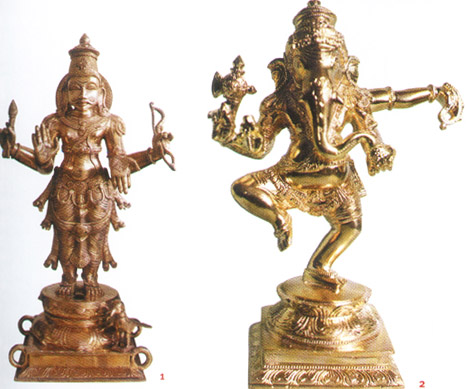The metallurgical art of creating artifacts which requires great skill and expertise is advanced, yet ancient. It involves thermo-mechanical processes and advanced techniques of melting, shaping, and treating of metals. The development of bronze casting in south India dates back to the Satavahana period in the 3rd century AD. Metal casting began to flourish when craftsmen from various towns migrated to Bangalore due to easy availability of raw materials. The craftsmen in Okalipura who were goldsmiths by tradition, turned to metal casting, and have trained many outside their families. They specialize in lost wax casting of metal idols in bronze and ‘pancha loha’, an alloy of silver, gold, copper, zinc and lead which is prescribed by the Shilpa Shastra . Considered as an auspicious combination, it is of sacred significance in making Hindu temple murtis(idols) . The Krishna temple of Udupi offers patronage to such sthapatis or metal craftsmen who are well versed in the Shilpa Shastra and this has led to the creation of the Udupi style of metal casting. Today, the high-priced gold and silver are omitted in casting of common or general-purpose icons, and copper, brass and lead are used.
Production clusters: Bangalore city (Okalipura, Magadi road), Kolar (Shivarapatna), Mysore (Mysore, Mandi Mohalla), Mandya (Nagamangala)
Products: Idols and Figurines
Tools: Chisels, Drills, Blowers, Files, Tongs, Buffing machine, Box Moulds, Emery Paper



